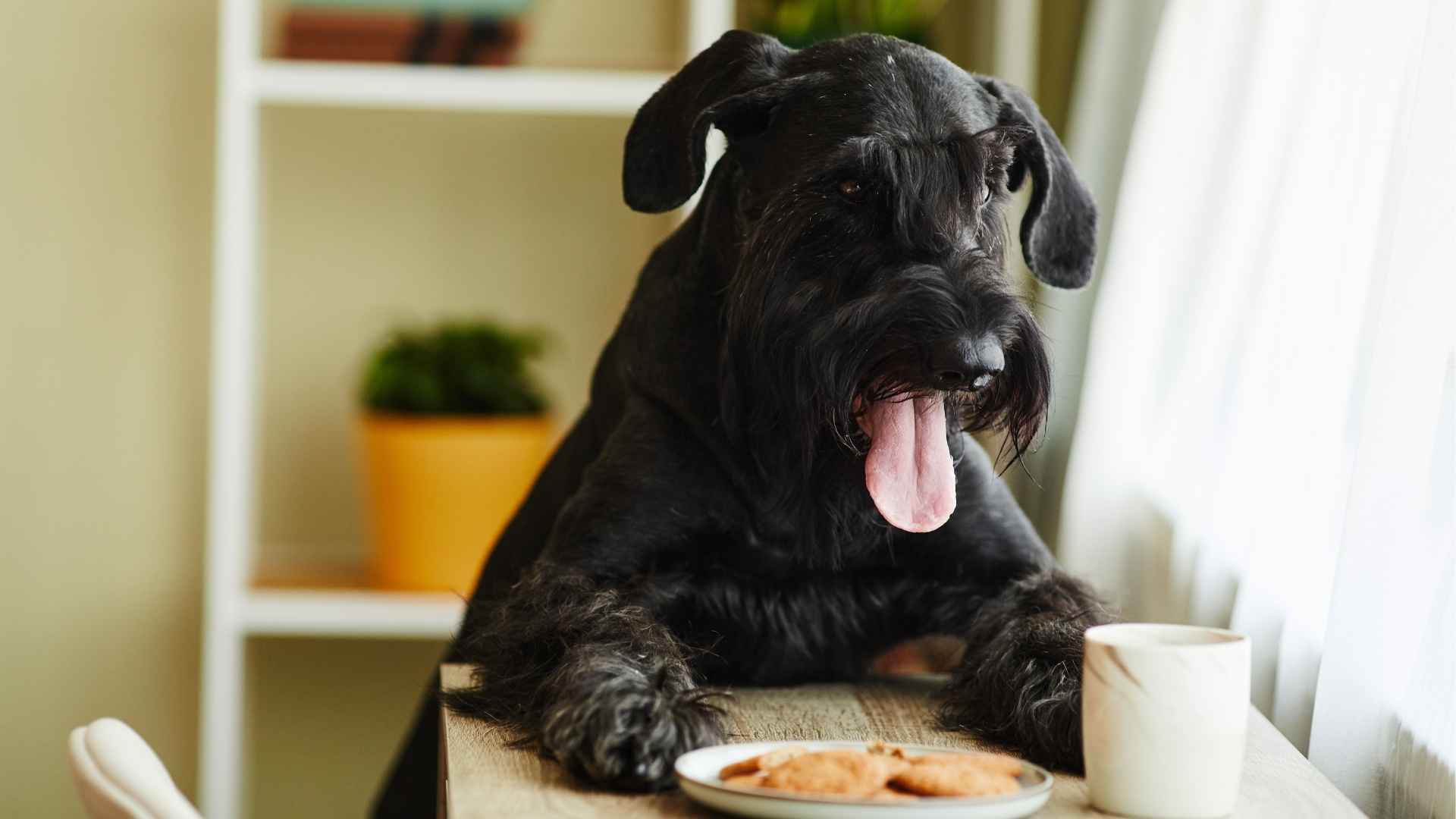Feeding your dog shouldn’t feel like a high-stakes cooking show. You want a pup that’s not dramatically picky but not inhaling food like a competitive sport. Enter the moderate-eater dog breeds—the perfect balance between chill and chowhound.
These breeds won’t throw a fit over kibble, but they won’t knock over furniture trying to get to the treat jar. Their eating habits are consistent, low-drama, and refreshingly regular. If you love a steady routine and zero food-related anxiety, this list is your vibe in dog form.
In a world of extremes—whether it’s ultra-picky eaters or snack-obsessed gremlins—these pups are the Goldilocks zone of feeding. They enjoy mealtime and are open to variety, but they know when to say, “I’m good.” It’s inspiring, honestly.
Moderate eaters are ideal for first-time dog parents, busy households, or anyone who values predictability. You’ll still see happy tail wags and the occasional “Is it dinnertime yet?” glance without the stress of begging bloat or bowl boycotts.
Whether you’re team home-cooked or kibble-all-day, these breeds make feeding routines easier—and way more enjoyable.
Moderate Eater Dog Breeds
From tiny charmers to gentle giants, these breeds know how to enjoy a meal without making it a whole production. Let’s dig into the best of the balanced bunch.
1. Beagles

Beagles may be legendary for their noses, but their moderate eater status makes them perfect for homes that crave food balance. Sure, they love treats (don’t we all?), but they’re surprisingly good at pacing themselves—especially with the proper structure.
They’re natural foragers, which means they love mealtime and enjoy working for food in fun, interactive ways. Puzzle feeders and sniff mats are made for beagles to help control their portions without drama.
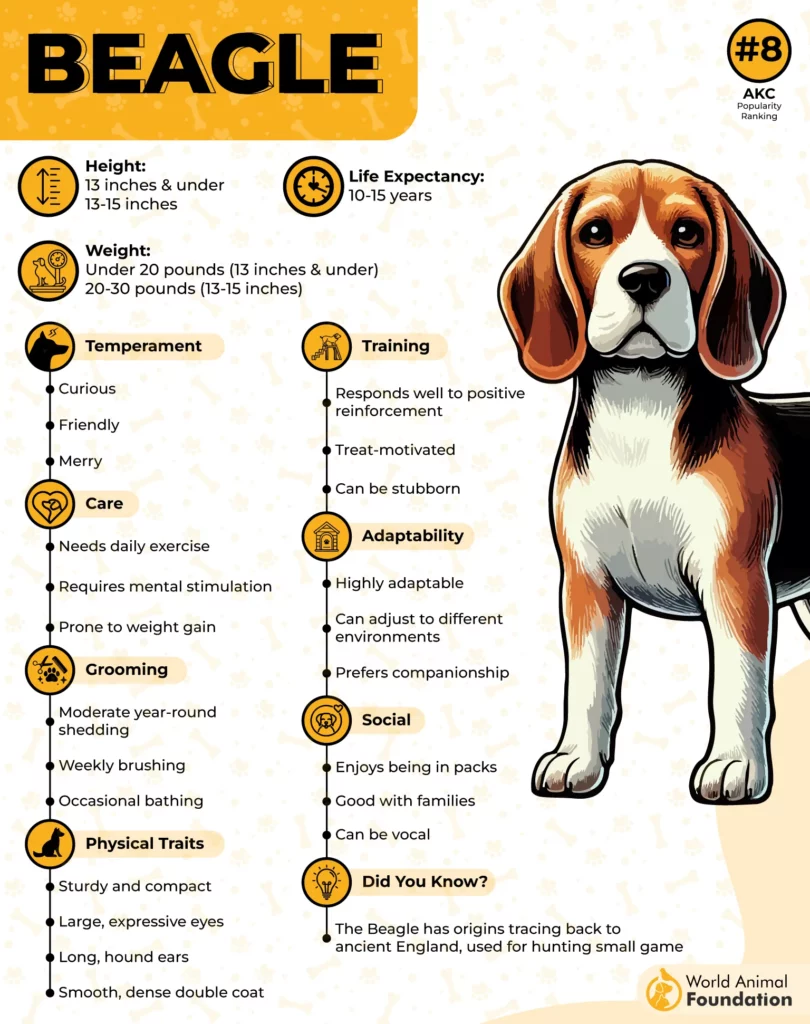
What makes Beagles truly ideal moderate eaters is their adaptability. They’ll eat dry kibble, wet food, raw meals—you name it—but they won’t throw tantrums if you stick to the basics.
They’re also compact, as Purina says, which makes portion control more manageable. Plus, their energy levels help them burn through meals without packing on pounds (as long as you don’t go too heavy on treats).
Just be mindful not to let their moderate appetite become a greedy one. Beagles will try to talk you into a second breakfast with those big eyes, but their balance thrives when you stay consistent.
End of the day? Beagles make feeding fun without going full foodie mode. They’re here for the meal, not the Michelin experience.
2. Basenji

The Basenji, a.k.a. the “barkless dog,” brings quiet cool to everything they do—including how they eat. These elegant little athletes, as PetMD says, are known for being clean, tidy, and balanced, and that goes double for mealtime.
Basenjis are often selective but not picky, meaning they won’t just eat anything you throw their way—but once they like something, they stick with it. They don’t graze or binge. They eat to fuel, not to impress.
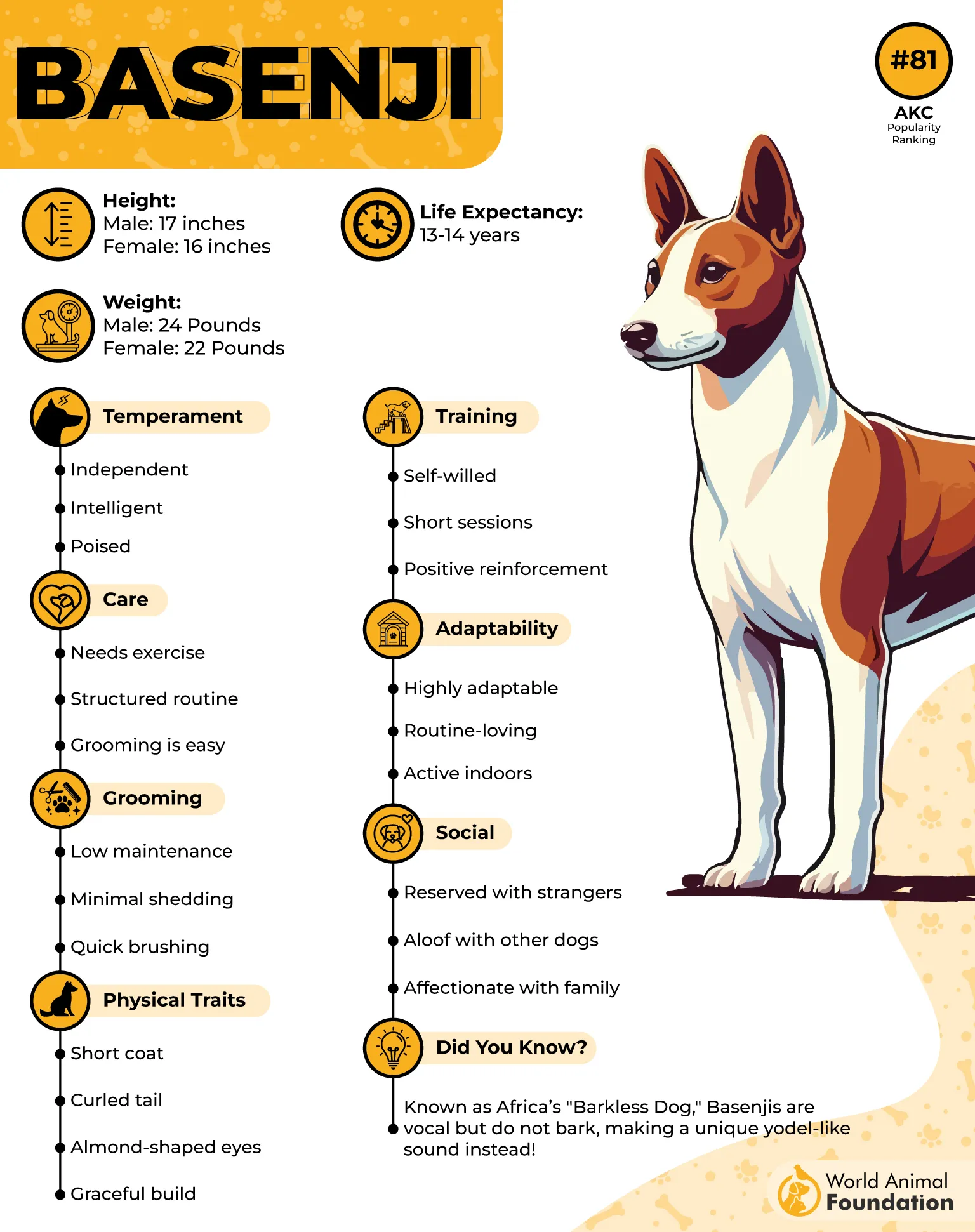
This kind of dog finishes a meal and then gracefully trots off. No begging, no bowl-licking marathons, no emotional manipulation. Just a solid, satisfying meal and a cool exit.
They maintain lean muscle and steady energy because they’re athletic but not hyper. That makes portion planning easy. You won’t need to constantly adjust or worry about obesity creeping up unexpectedly.
Basenjis are also low-maintenance in the kitchen—minimal drool, no food flinging, and no weird post-meal rituals. They’re practically built for clean eating.
If you’re a fan of minimalism, moderation, and a little mystery, the Basenji is your zen-foodie spirit animal in dog form.
3. West Highland White Terrier

The Westie is like the sassy small dog who somehow always looks fresh off a blowout and manages to keep their life together, including their diet. Westies are balanced, smart eaters who keep things simple but satisfying.
They’re known for having good appetites without being greedy. Sure, they’ll perk up at the sound of the food bin opening, but they won’t stage a hunger strike if you serve the same meal two days in a row. Westies are creatures of habit—in a good way.
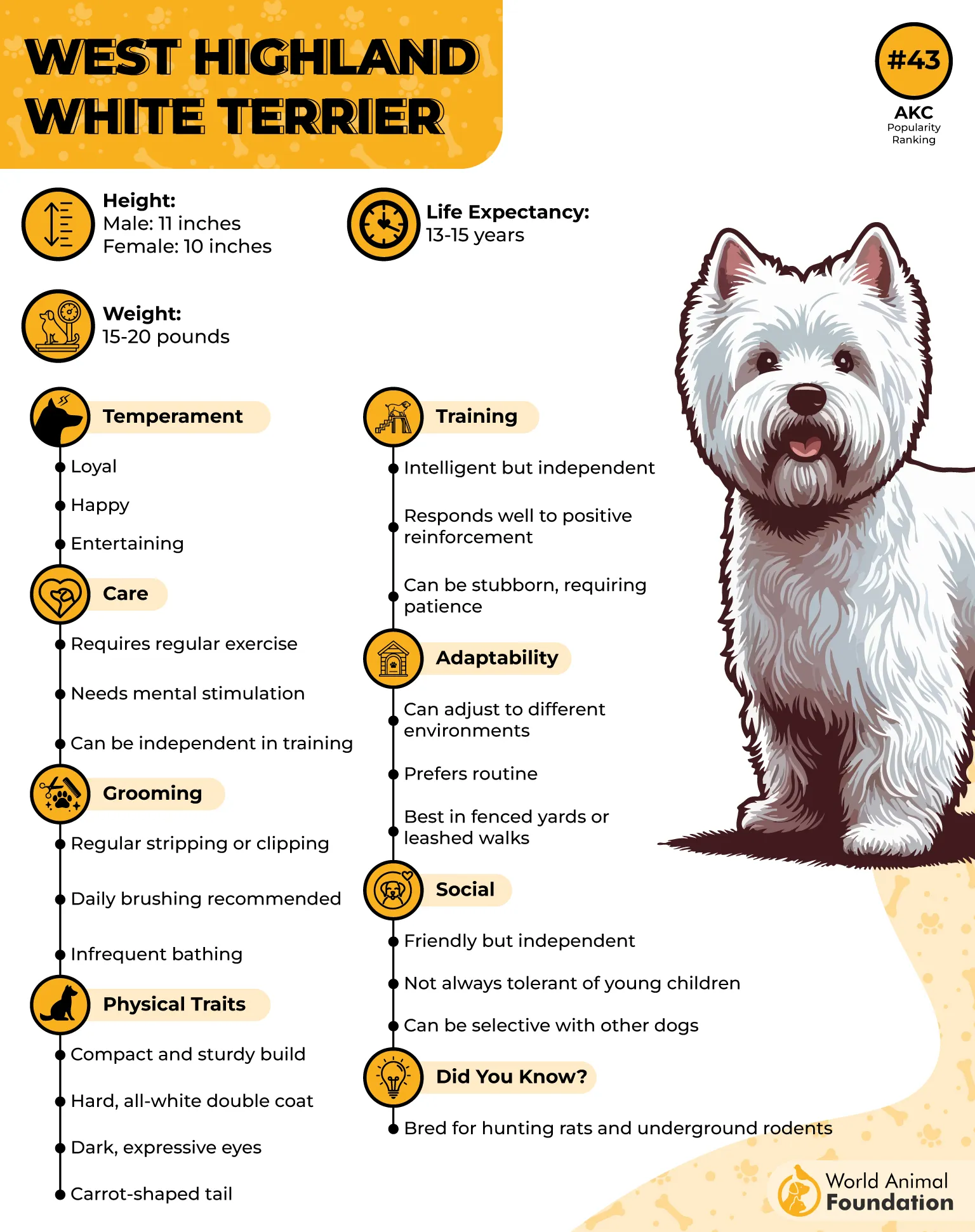
Thanks to their terrier toughness, these high-energy dogs aren’t dainty with their food, but they’re also not food-obsessed. They like structure, and they respect routine, which makes them ideal for households that thrive on predictability.
They’re not likely to get bored with their food if you pick something nutritious and consistent. But if you do want to shake things up with new proteins or textures, Westies are usually up for the culinary adventure.

Weight-wise, they’re solid little dogs. Stick to recommended portions and keep treats limited, and your Westie will stay trim, energetic, and ready for action.
Low drama, low maintenance, and just enough enthusiasm to keep things interesting—Westies are like meal-prep queens who actually enjoy their food. Respect.
4. Bichon Frise

If dogs had food diaries, the Bichon Frise would be the one who tracks their macros without making a big deal about it. These cloud-like cuties are moderate eaters through and through—they enjoy their meals but never go overboard.
Bichons are known for their even temperaments and balanced appetites, which makes them easy to feed without worry. They’re not the kind to inhale food in 30 seconds flat or turn their nose up in protest—they’re right in the middle, and that’s their magic.
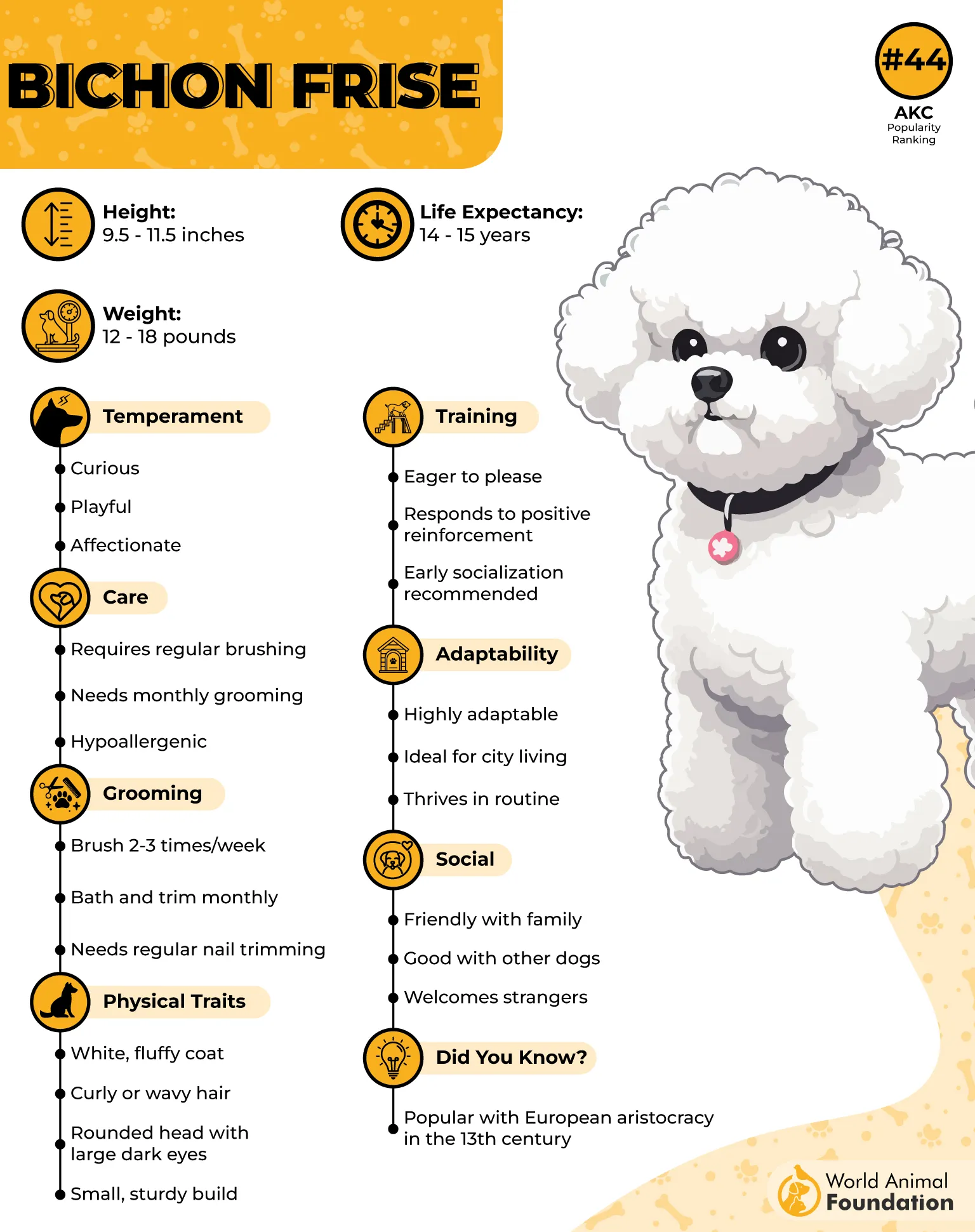
They tend to be sensitive to rich or low-quality foods, which means they do best on a consistent, high-quality diet. But once you’ve found the right blend? They stick to it like loyal brunch regulars.
Their small size means even a modest portion satisfies them, and their low tendency toward weight gain (as long as they get regular exercise) makes managing their meals pretty straightforward.
This breed is generally considered a hypoallergenic dog, as per Pet Plan, meaning they are less likely to cause allergic reactions, though no dog is 100% allergen-free.

If you want a dog that’s all fluff, no food fuss, and brings good energy to mealtime, the Bichon Frise is basically the polite foodie friend we all want at the dinner table.
5. Bullmastiff

Big dog, big appetite? Surprisingly, not always—and the Bullmastiff is proof. These gentle giants are some of the most chill, moderate eaters you’ll ever meet. They’re here for the food, but they’re not gonna rush you about it.
Despite their massive build, Bullmastiffs don’t eat as much as you’d think. They have a slower metabolism, which means feeding them is more about quality than quantity. A hearty meal goes a long way with these laid-back companions.

Bred as estate guard dogs, they eat with purpose, not desperation. There’s no chaotic bowl-scraping or frantic gulping. They tend to chew thoughtfully and enjoy their meals at a leisurely pace, which, let’s be honest, is a kind of goal.
Because they’re so chill and have a gentle demeanor, they’re also less likely to beg at the table or try to “help themselves” to snacks. They respect boundaries and routines, especially when mealtimes are consistent.
One thing to watch?
They’re prone to weight gain if overfed, so portion control is key, but they’ll rarely try to hustle for extra unless they know you’re a softie (stay strong!).
All in all, the Bullmastiff is your no-nonsense dinner date while being a good low-maintenance breed when compared to other animals.
6. Yorkshire Terrier

The Yorkie might be tiny, but its eating habits are delightfully moderate. They’re the kind of dog that doesn’t demand gourmet meals—but also won’t just eat anything. Balanced, refined, and cute as heck while doing it.
These active dogs often have small but steady appetites. They like structure, appreciate flavor, and will gladly enjoy their meal without making it a production. They’re not grazers, and they’re not gobblers—just consistent little foodies.
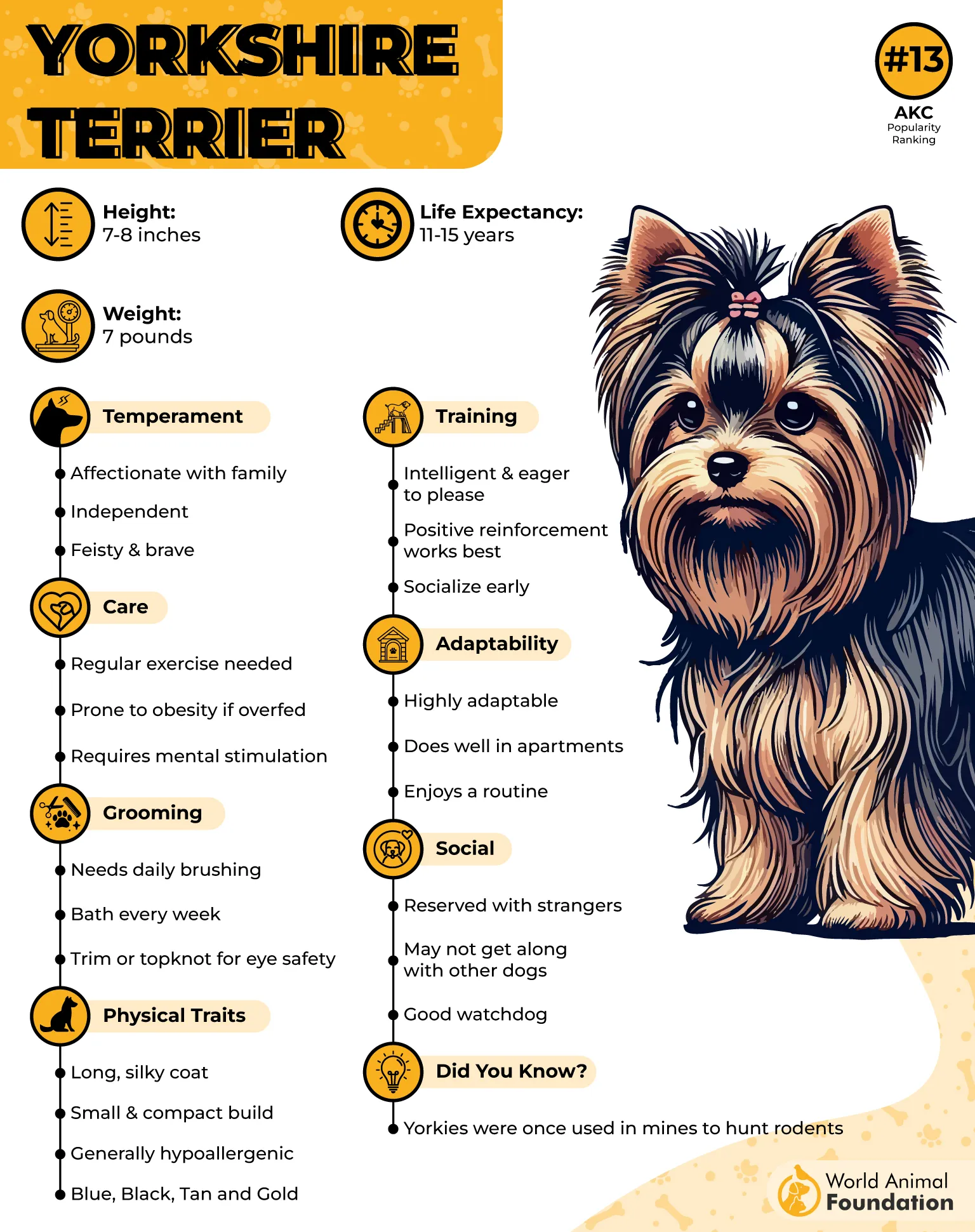
Because of their size, they don’t need large portions, and that makes finding the perfect diet surprisingly budget-friendly. A small bag of premium kibble? Lasts ages. Tiny meals, big satisfaction.
Yorkies are often seen as picky, but it’s more about preferences than stubbornness. Once you find what works for them (think small-bite kibble or lightly warmed meals), they become model eaters.
These mild-mannered pups thrive on a routine. Set feeding times, consistent meal spots, and a little praise post-meal go a long way. They’re all about the ritual, not the chaos.
If you love a dog that eats with grace and doesn’t turn into a goblin over snacks, the Yorkshire Terrier is your perfect pint-sized companion.
7. Saint Bernard

You’d think the Saint Bernard, with its bear-like size and droopy jowls, would be a food-devouring machine—but nope. This gentle giant is actually a surprisingly moderate eater. Big frame? Yes. Big food drama? Not at all.
Saints have slow, steady metabolisms, meaning they don’t need as much food as people assume. They’re all about the “quality over quantity” mindset, making them refreshingly reasonable at the food bowl.

They don’t rush mealtime or beg for seconds. Instead, they usually approach food with calm enthusiasm, eat what’s there, and then go lie down like the chill, oversized cuddle bug they are. No table surfing, no tantrums.
If you are a slow eater yourself, this is the best dog to own!
WebMD declares them as easy-going dogs!
Saint Bernards do best with measured portions split into smaller meals throughout the day to avoid bloating. They’re not snack-happy scavengers, so it’s easier to stick to a feeding plan without drama or guilt trips.
Despite their size, they’re low-key, low-maintenance when it comes to eating. You’ll definitely need a big bowl, but you won’t need constant refills.
For anyone who wants a dog that brings big love without a big appetite or fuss, the Saint Bernard is a walking (and drooling) reminder that moderation really is beautiful.
8. Miniature Schnauzer

Don’t be fooled by the fancy beard and judge-y eyebrows—the Miniature Schnauzer is actually one of the most well-behaved diners in the dog world. This spunky little breed is a solid, moderate eater who knows how to keep things balanced.
They love food, sure, but they’re not the “inhale first, ask questions later” type. They’ll eat with enthusiasm but stop when they’re full, making them great for structured feeding routines and healthy weight maintenance.

Mini Schnauzers are also known for having sensitive stomachs, so they tend to stick to what works. Once you’ve nailed the right food formula, they become very reliable eaters—no complaints, no surprise upsets.
Because they’re smart and active, you can mix up their feeding experience with interactive feeders or treat puzzles, which helps keep things fun without encouraging overeating.
They’re not huge on the table begging, either. Their natural confidence (and a bit of sass) means they’ll wait their turn, politely expect their meal, and then carry on with their bossy little trot afterward.
In short? A Mini Schnauzer brings personality, intelligence, and a perfectly measured love for food. If you’re into dogs that match your energy but don’t overdo it at dinner, this one’s for you.
9. Brussels Griffon

Quirky? Absolutely. Needy? Sometimes. But when it comes to food? The Brussels Griffon is all about balance. This scruffy-faced charmer has a moderate appetite that’s surprisingly easy to manage despite its dramatic looks.
Brussels Griffons are known for being emotionally expressive—think of them as the tiny dog version of an indie film actor—but mealtimes don’t tend to come with theatrics. They eat well, they eat regularly, and they aren’t overly picky if their basic needs are met.
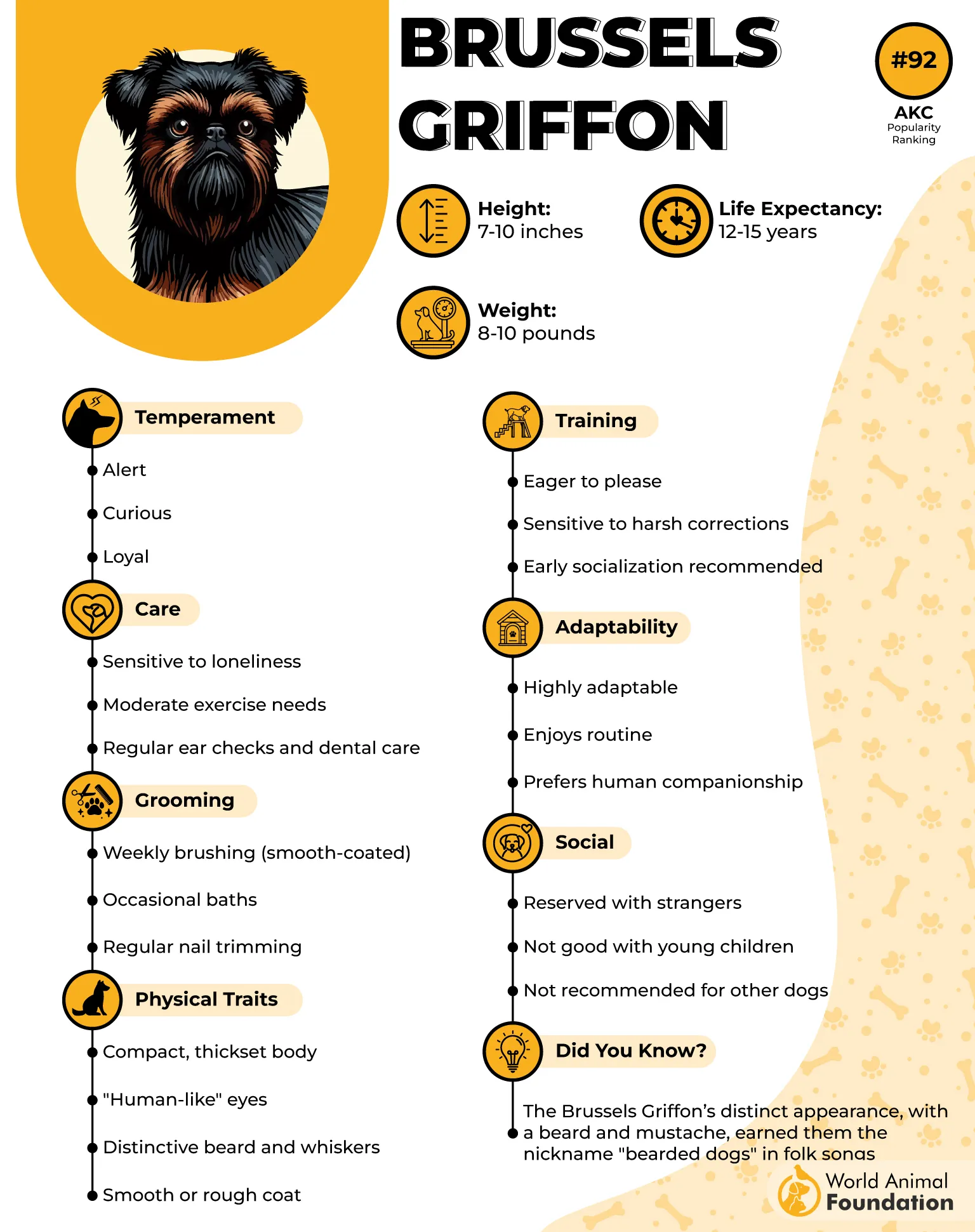
They can have refined tastes (a.k.a. might side-eye bargain kibble), but once you find their fave, they’re super consistent. No protests, no bowl flips, just satisfied little crunches and a post-meal snuggle.
Their small stature means they don’t need huge portions, and most Griffons naturally self-regulate their intake. They’re more likely to walk away when full than to go back for unnecessary seconds.
Because they’re prone to dental issues, soft or small-bite food options are ideal, and most Griffons are perfectly fine with that, making dental-friendly diets a breeze.
They’re expressive, adorable, and just the right kind of extra—except when it comes to eating, where they stay delightfully grounded.
10. Irish Wolfhound

At first glance, the Irish Wolfhound looks like it might require a buffet-style meal plan—but in reality, this dignified, gentle giant is a textbook moderate eater. Graceful, calm, and unbothered, they treat food like fuel, not fanfare.
Despite their towering size, Wolfhounds don’t have wild appetites. In fact, they’re known for eating less than you’d expect due to a slower metabolism and their chill temperament. No frantic feeding here—just a steady, measured routine.
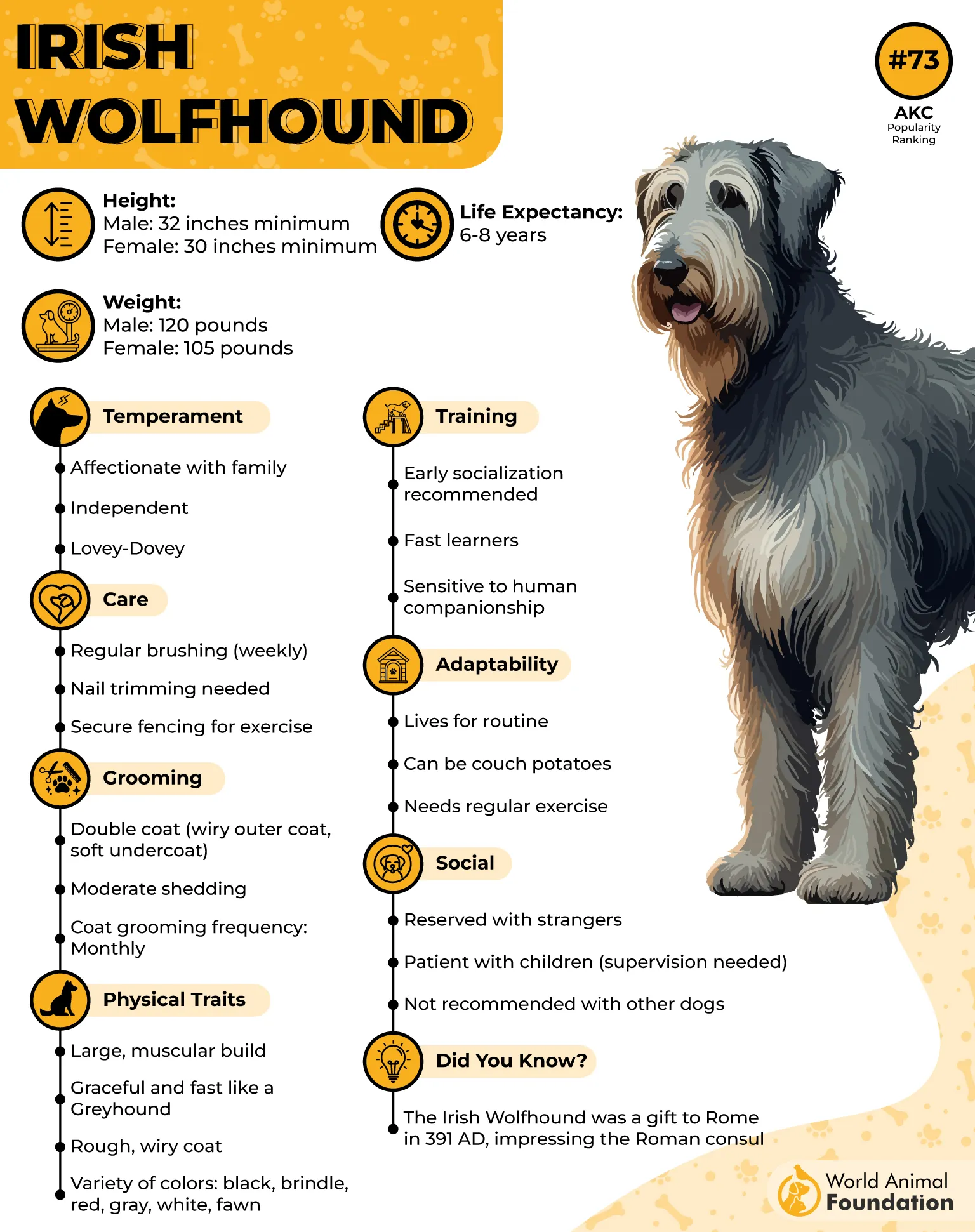
They aren’t typically food-motivated, which actually makes it easier to train around the house (no countersurfing from these giants). But they still enjoy a good meal and usually stick to a consistent pattern once you establish it.
Because of their size and deep chest, splitting meals into two or three portions a day is ideal to help avoid bloat. Thankfully, they’re not greedy eaters and won’t rush mealtime.
They’re also relatively unfazed by new food introductions. As long as you transition gradually and stick to quality ingredients, they adjust well without the drama.
Elegant, thoughtful, and refreshingly unfussy, the Irish Wolfhound proves that sometimes the biggest dogs bring the calmest energy, especially at dinnertime.
Conclusion
Feeding your dog shouldn’t feel like managing a Michelin-star kitchen—or refereeing a food fight. These moderate-eating breeds strike the perfect balance: they eat well, they stay healthy, and they don’t make a whole event out of every meal.
From the compact confidence of a Yorkie to the gentle grace of an Irish Wolfhound, these dogs keep their appetites sensible and satisfying. They’re easy to feed, easy to plan for, and a total relief for pet parents who want structure without struggle.
With some other dogs like the Basset hound, Shih Tzu, and Bernese mountain dog, feeding time becomes a moment of joy, not chaos.
So, while you’re meal-prepping dog bowls, these breeds will keep their cool and eat with grace—because moderation is the real mealtime superpower.


